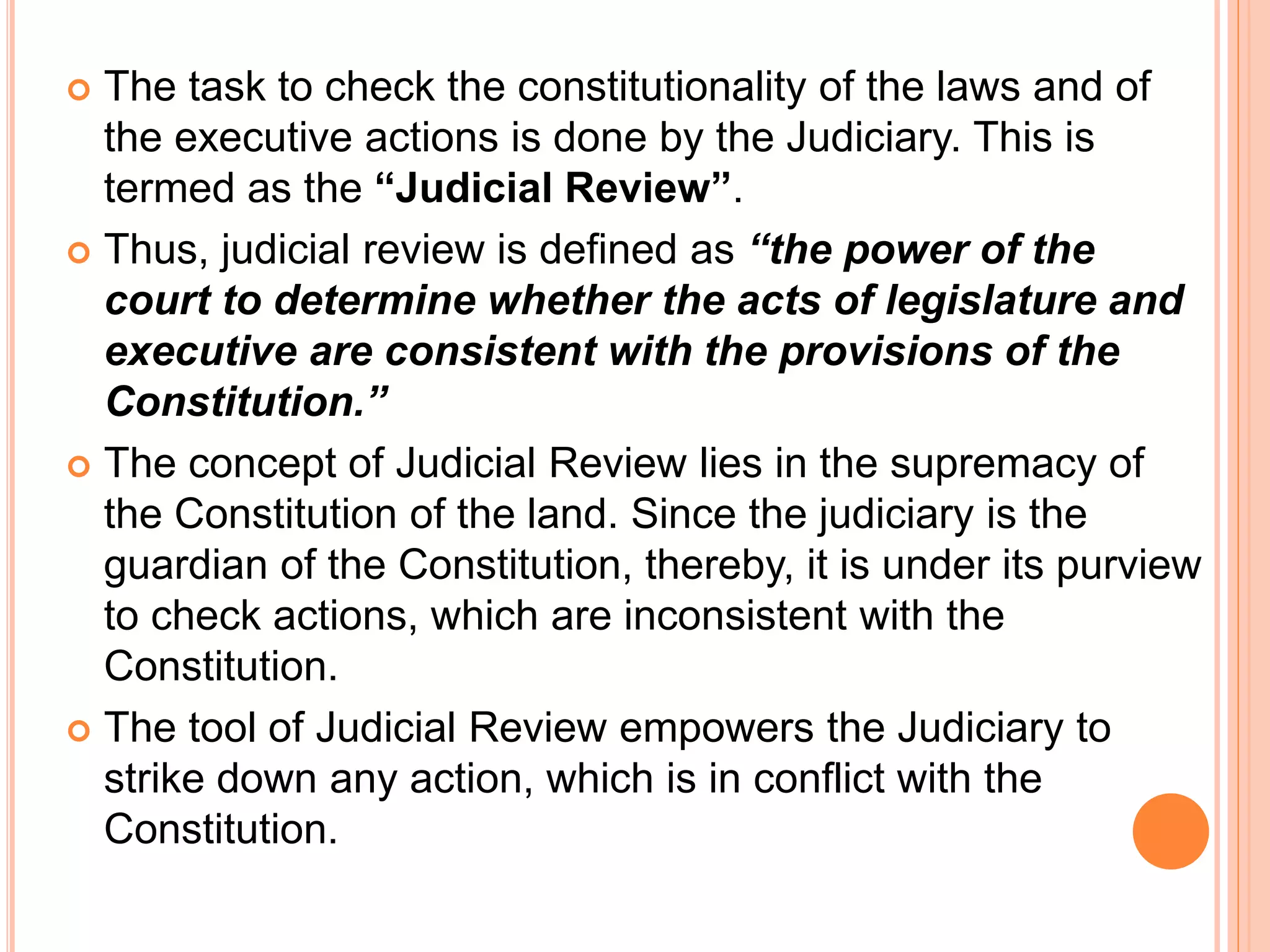The document provides an in-depth exploration of judicial review in India, emphasizing its foundational role in ensuring that legislation and executive actions adhere to the Constitution. It highlights the historical development of judicial review, its constitutional basis, and significant court cases that have shaped its scope and application. Additionally, the text discusses the concept of judicial activism, the importance of protecting fundamental rights, and the impact of the judiciary in overseeing the actions of the legislature and executive.




















